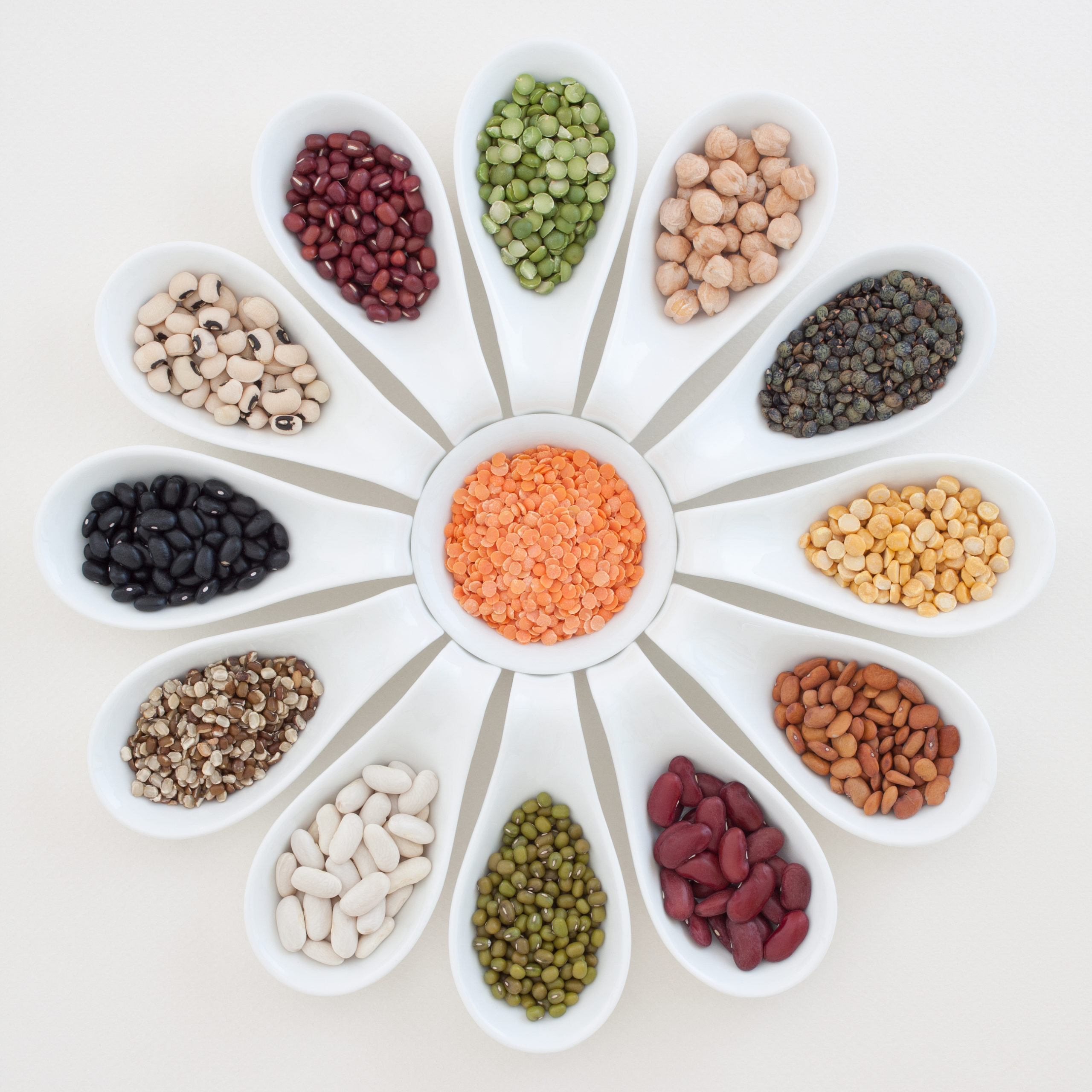Lectins are a carbohydrate-binding protein that are found in a number of everyday foods, including legumes, and some grains. They are often considered antinutrients since they can reduce your body’s ability to absorb nutrients, specifically calcium, iron, phosphorus, and zinc. They may also contribute to digestive issues, potentially leading to deficiency and malabsorption problems.
WHAT EXACTLY IS A LECTIN-FREE DIET?
The term “lectin-free” diet was first coined by Dr. Steven Gundry, author of The Plant Paradox. Dr. Gundry believes lectins are the root cause of inflammation as well as a number of chronic health diseases.
While his claims are highly disputed and often labeled as pseudoscience, many have had success with removing lectins from their diet, reversing symptoms of chronic illness, and reducing inflammation, thus solidifying the idea that an optimal diet truly is individual.
So, what exactly is a lectin-free diet and which foods should you omit? More importantly, what can you eat?
BEANS
Lentils, garbanzo, kidney, and black beans are excellent sources of low glycemic carbohydrates and plant-based proteins that fall into the legume family. They’re also high in resistant starch and fiber which can be beneficial to gut health.
Beans are also high in lectins – one of the highest food groups – which is why they’re thought to be pro-inflammatory and excluded on a lectin-free diet. This is also the reason why they contribute to symptoms of gas and bloating.
Cooking beans reduces the lectin content significantly, though supporters of a true lectin-free diet, like Dr. Gundry, insist they need to be removed entirely. Others, who take a more relaxed approach recommend pressure cooking, sprouting, or fermenting your beans to further reduce the lectin content before eating.
WHEAT
Despite it being a global food staple, wheat does not only contain gluten, another digestive disruptor, but lectins too. Controversially, whole wheat, which in theory is healthier than refined wheat, is higher in lectins since the processing procedure eliminates and helps breakdown lectins.
Lectins are also found in high amounts in barley and rye.
GLUTEN-FREE GRAINS
Corn is another global food staple; but unlike wheat, it also happens to be naturally gluten-free. This would normally be good news, but it’s high in lectins.
Since many people are now following a gluten-free eating regimen, corn consumption has increased, which means lectin consumption has increased. Corn is also the base ingredient for a number of food additives including corn syrup and cornstarch, as well as quick and accessible food items like cereal.
Oats, quinoa, and rice are also gluten-free but lectin-heavy grains. Soaking or sprouting your grains before use can help reduce lectin-content and reduce the risk of digestive and inflammatory issues.
PEANUTS & NUTS
Peanuts and nuts are excellent sources of B vitamins, healthy fats, and vitamin E. Like beans, peanuts and cashews are part of the legume family; however, high heat or cooking does not reduce the lectin content in peanuts or peanut products.
Almonds are part of the nut family, but their lectin content is also unaffected by heat or cooking. If you’re trying to reduce your lectin intake, remember this includes things like nut-based milks. Again, sprouting your nut of choice can help reduce lectin content.
NIGHTSHADES
Nightshade vegetables include eggplants, tomatoes, potatoes, and peppers, which we covered on the blog recently.
Nightshades, specifically tomatoes, are high in vitamin c and lycopene whereas potatoes are an excellent source of potassium and fiber. Unfortunately, not only are nightshades high in solanine, a toxin that can cause inflammation and gut irritation, they are also high in lectins.
Cooking does not reduce either solanine or lectins in this food family, so it’s best to avoid them if you’re trying to reduce your lectin intake.
FOODS TO FOCUS ON
Almost all foods contain some level of lectins; however, most fruits and vegetables have very limited amounts compared to nightshades, legumes, nuts, wheat, and grains.
Leafy green vegetables like kale, rainbow chard, spinach, and collards are all low lectin or lectin-free as well as fruits like apples, oranges, avocadoes, cranberries, and raspberries.
All kinds of animal protein are lectin-free including fish, beef, chicken, and eggs as well as butter and olive oil. Just be sure to avoid conventionally raised meats and eggs, as the animal was most likely fed a corn-heavy diet.
Look for pasture-raised chicken and eggs and grass-fed meat to purchase instead. Compliant lectin-free diet nuts include walnuts, pecans, flax seeds, hemp seeds, and Brazil nuts. Coconut milk is also a low lectin alternative to almond milk.
FINAL TAKEAWAY
In theory, it seems like a no-brainer to remove these potentially disruptive foods, but lectin-heavy foods also contain a host of vital nutrients in addition to being an excellent source of plant-based protein. In a world where almost every food has both health benefits and detriments, how do you weigh the pros with the cons?
How do you ensure you’re feeding your body only microbiome approved foods while guaranteeing you hit your nutrient goal for the day? In the Certified Transformational Nutrition Coach (CTNC) curriculum, we teach that food choices are as individual as the person eating them. This means the healing journey will be individual, too.
It’s possible you may not digest potatoes well but do fine with eggplants and tomatoes. Similarly, you may be okay with cashews but have reoccurring indigestion after eating peanuts. It’s important to listen to your body, be your own health advocate, and create an individual plan of healing that is unique to you.

+ show Comments
- Hide Comments
Free Resources
Take A Look at the latest from ITN:
Courses
add a comment